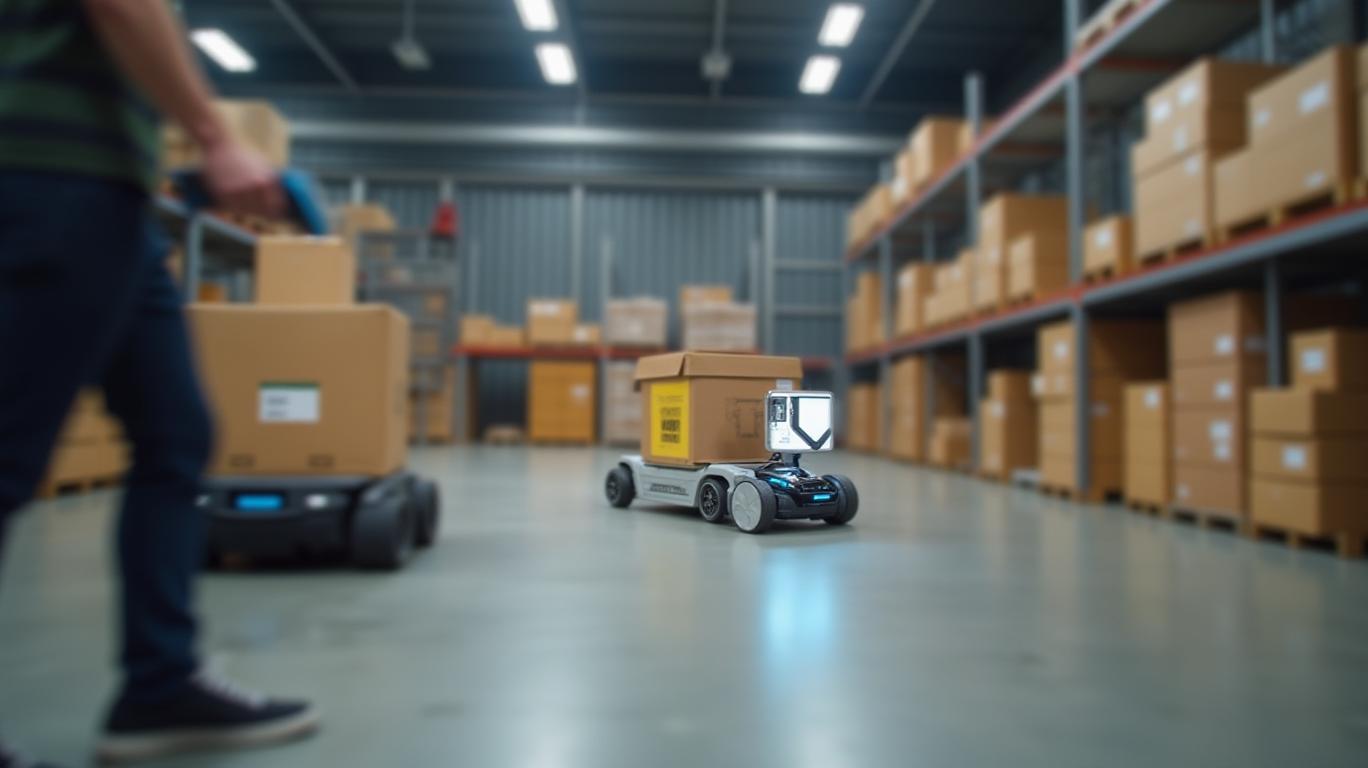Zebra Technologies' Dip Presents a Rare Entry Point in Supply Chain Automation
Investors fleeing
(NASDAQ: ZBRA) in 2025 have overlooked a critical truth: the company's temporary struggles are masking a golden opportunity to capitalize on the $2.5 trillion global supply chain automation market. While tariff headwinds and macroeconomic jitters have pushed ZBRA's stock down 35% year-to-date, the company's dominance in enterprise visibility systems, asset tracking, and AI-driven solutions positions it to thrive in a world demanding smarter logistics. Let's dissect why this pullback is a strategic buying opportunity.The Near-Term Storm: Tariffs and Margin Pressures
Zebra's Q1 2025 results highlighted resilience amid turmoil: revenue rose 12% to $1.31 billion, and EPS of $4.02 smashed estimates. Yet, the stock fell 27.5% over six months due to fears around tariffs and margin erosion. The U.S. imposed duties on Chinese imports have cost Zebra an estimated $70 million in gross profit for 2025—roughly 2% of its $3.6 billion annual revenue. Analysts warn that 2H25 gross margins could dip below 49%, which had been a steady floor for years.
Meanwhile, macroeconomic softness—slower e-commerce growth and manufacturing inventory corrections—has dampened demand for Zebra's barcode scanners and RFID systems. The company's exposure to China's manufacturing hubs also raises supply chain risks as geopolitical tensions simmer.
Why This Is a Buying Opportunity: Long-Term Catalysts Take Center Stage
Beneath these short-term clouds, three secular trends are accelerating:
1. E-Commerce's Unstoppable Growth: Global e-commerce sales will hit $8 trillion by 2025, requiring retailers to adopt Zebra's inventory management systems to reduce fulfillment errors.
2. Industry 4.0's $12 Trillion Play: Factories worldwide are digitizing with Zebra's AI-driven asset tracking and predictive maintenance tools, which now account for 30% of its revenue.
3. Zebra's Innovation Pipeline: Its $158 million Q1 free cash flow funds acquisitions like Photo Neo (3D machine vision) and R&D in autonomous mobile robots (AMRs). These moves are widening its lead over rivals like Honeywell (HON) and Motorola Solutions (MOT).

Financial Fortitude and Undervalued Metrics
Zebra's balance sheet is a fortress:
- Net Debt/EBITDA Ratio: 1.2x (far below peers' 2.5x average)
- Free Cash Flow: $158 million in Q1, up 18% YoY
- Share Buybacks: $500 million program still active, signaling confidence
Despite its 35% YTD decline, ZBRA trades at just 15x forward EBITDA, a 30% discount to its five-year average. Barclays recently slashed its price target to $263 but admitted the stock is undervalued at current levels. Bulls see a $400+ price tag if Zebra recaptures 20% margin growth by 2026.
The Bottom Line: Ride the Wave of Automation
The market is pricing in worst-case scenarios for tariffs and macro weakness, but Zebra's solutions are too critical to global supply chains to ignore. As e-commerce matures, warehouses and factories will increasingly rely on Zebra's “digital twin” systems to optimize workflows. With a track record of outperforming peers during past recessions—its revenue grew 8% in 2020's pandemic—the company is primed to rebound when demand stabilizes.
Action Item: Buy ZBRA at $300/share—this represents a 25% discount to its 52-week high—and set a stop-loss at $250. Hold for 12-18 months as supply chain automation becomes the next tech revolution. The risks are real, but the reward of owning a $50 billion company at a $30 billion valuation is too compelling to pass up.
The time to act is now. Zebra's dip isn't a death sentence—it's an invitation to own the future of logistics.

Comments
No comments yet